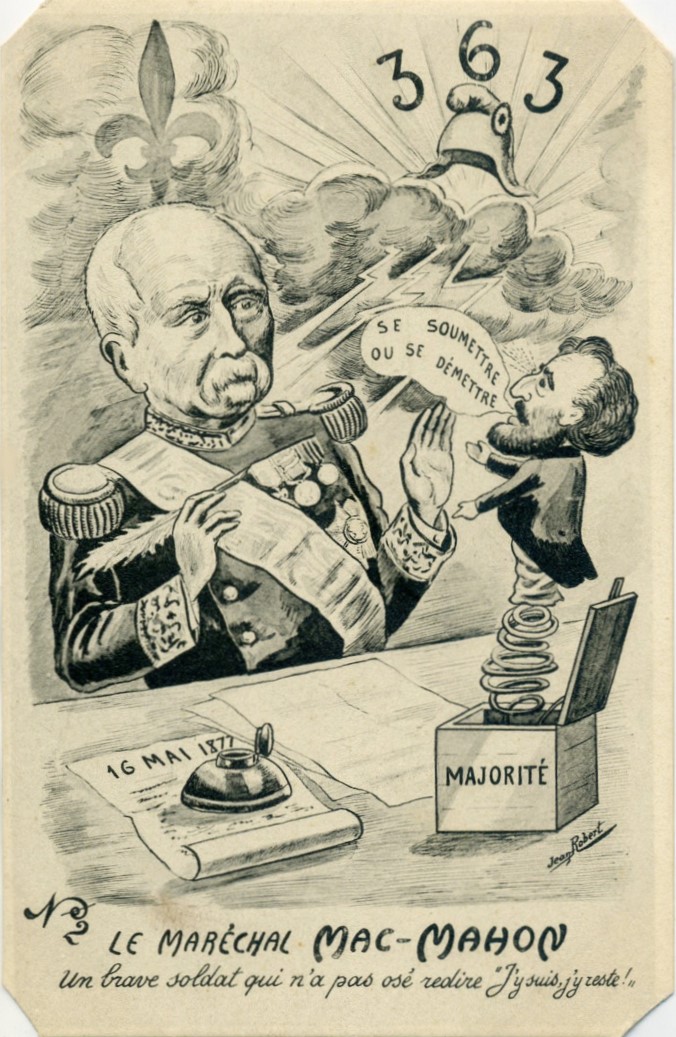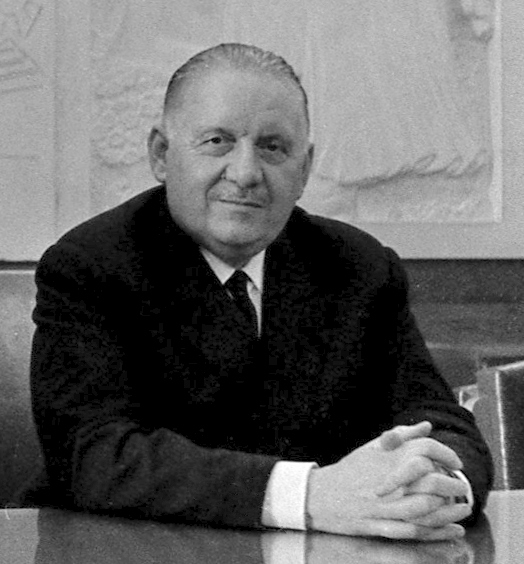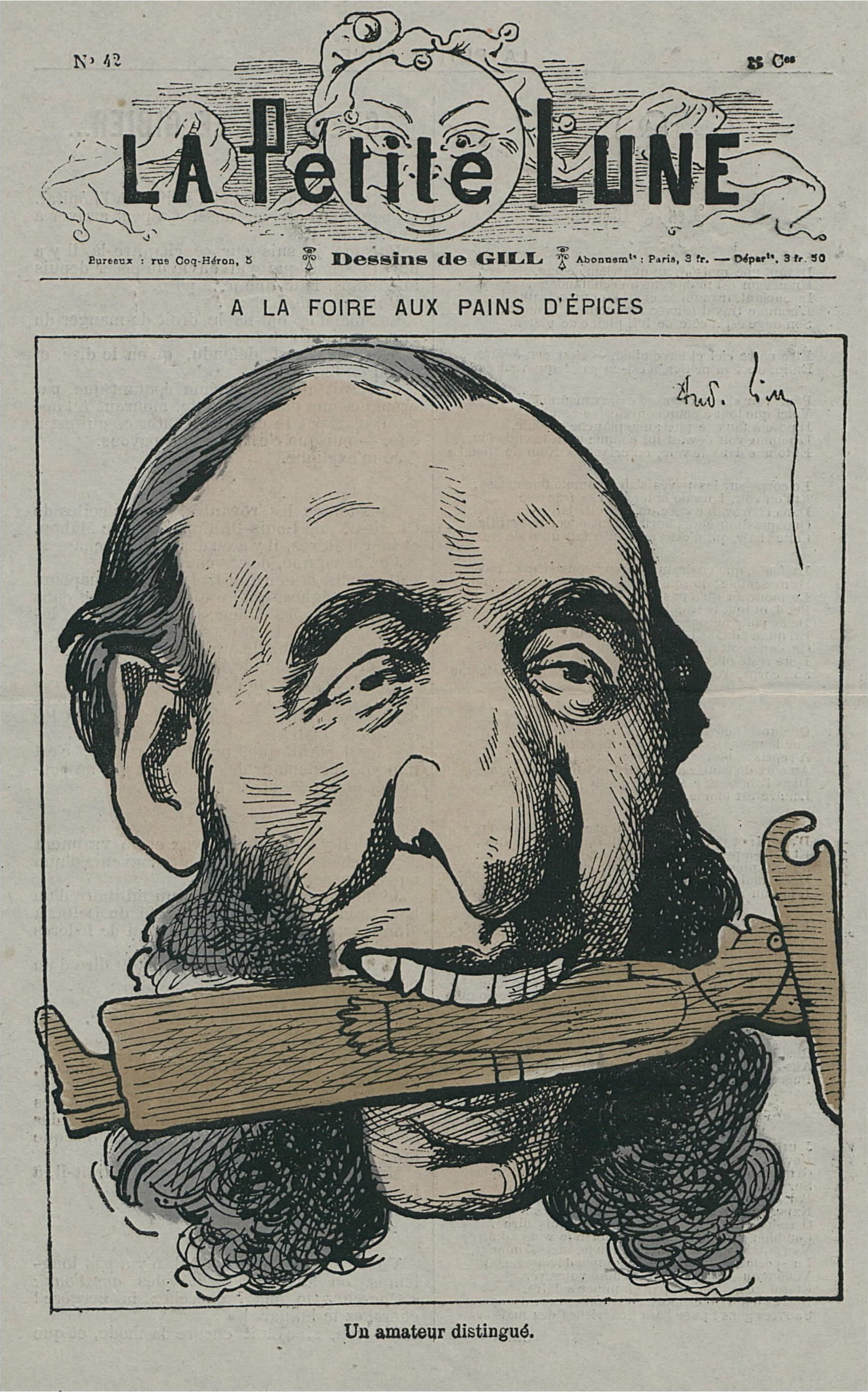|
16 May 1877 Crisis
The 16 May 1877 crisis (french: link=no, Crise du seize mai) was a constitutional crisis in the French Third Republic concerning the distribution of power between the president and the legislature. When the royalist president Patrice MacMahon dismissed the Opportunist Republican prime minister Jules Simon, the parliament on 16 May 1877 refused to support the new government and was dissolved by the president. New elections resulted in the royalists increasing their seat totals, but nonetheless resulted in a majority for the Republicans. Thus, the interpretation of the 1875 Constitution as a parliamentary system prevailed over a presidential system. The crisis ultimately sealed the defeat of the royalist movement, and was instrumental in creating the conditions of the longevity of the Third Republic. Background Following the Franco-Prussian War, the elections for the National Assembly had brought about a monarchist majority, divided into Legitimists and Orleanists, whic ... [...More Info...] [...Related Items...] OR: [Wikipedia] [Google] [Baidu] |
Marshal MacMahon
Marie Edme Patrice Maurice de MacMahon, marquis de MacMahon, duc de Magenta (; 13 June 1808 – 17 October 1893) was a French general and politician, with the distinction of Marshal of France. He served as Chief of State of France from 1873 to 1875 and as President of France from 1875 to 1879. MacMahon led the main French army in the war against the Germans in 1870. He was trapped and wounded at the Battle of Sedan in September 1870, in part because of his confused and indecisive strategic planning. The army, including MacMahon and Emperor Napoleon III, surrendered to the Germans. Thus France lost the war and the Emperor went into exile. After convalescing, MacMahon was appointed head of the Versailles Army, which suppressed the Paris Commune revolt in May 1871 and set the stage for his political career. MacMahon was a devout conservative Catholic, and a traditionalist who despised socialism and strongly distrusted the mostly secular Republicans. He kept to his duty as the neutra ... [...More Info...] [...Related Items...] OR: [Wikipedia] [Google] [Baidu] |
French President
The president of France, officially the president of the French Republic (french: Président de la République française), is the executive head of state of France, and the commander-in-chief of the French Armed Forces. As the presidency is the supreme magistracy of the country, the position is the highest office in France. The powers, functions and duties of prior presidential offices, in addition to their relation with the prime minister and Government of France, have over time differed with the various constitutional documents since the Second Republic. The president of the French Republic is the '' ex officio'' co-prince of Andorra, grand master of the Legion of Honour and of the National Order of Merit. The officeholder is also honorary proto-canon of the Archbasilica of Saint John Lateran in Rome, although some have rejected the title in the past. The incumbent is Emmanuel Macron, who succeeded François Hollande on 14 May 2017, and was inaugurated for a second ... [...More Info...] [...Related Items...] OR: [Wikipedia] [Google] [Baidu] |
French National Assembly
The National Assembly (french: link=no, italics=set, Assemblée nationale; ) is the lower house of the bicameral French Parliament under the Fifth Republic, the upper house being the Senate (). The National Assembly's legislators are known as (), meaning "delegate" or "envoy" in English; etymologically, it is a cognate of the English word '' deputy'', which is the standard term for legislators in many parliamentary systems). There are 577 , each elected by a single-member constituency (at least one per department) through a two-round system; thus, 289 seats are required for a majority. The president of the National Assembly, Yaël Braun-Pivet, presides over the body. The officeholder is usually a member of the largest party represented, assisted by vice presidents from across the represented political spectrum. The National Assembly's term is five years; however, the President of France may dissolve the Assembly, thereby calling for new elections, unless it has been ... [...More Info...] [...Related Items...] OR: [Wikipedia] [Google] [Baidu] |
French Senate
The Senate (french: Sénat, ) is the upper house of the French Parliament, with the lower house being the National Assembly, the two houses constituting the legislature of France. The French Senate is made up of 348 senators (''sénateurs'' and ''sénatrices'') elected by part of the country's local councillors (in indirect elections), as well as by representatives of French citizens living abroad. Senators have six-year terms, with half of the seats up for election every three years. The Senate enjoys less prominence than the first, or lower house, the National Assembly, which is elected on direct universal ballot and upon the majority of which the Government has to rely: in case of disagreement, the Assembly can in many cases have the last word, although the Senate keeps a role in some key procedures, such as constitutional amendments and most importantly legislation about itself. Bicameralism was first introduced in France in 1795; as in many countries, it assigned the ... [...More Info...] [...Related Items...] OR: [Wikipedia] [Google] [Baidu] |
Léon Gambetta
Léon Gambetta (; 2 April 1838 – 31 December 1882) was a French lawyer and republican politician who proclaimed the French Third Republic in 1870 and played a prominent role in its early government. Early life and education Born in Cahors, Gambetta is said to have inherited his vigour and eloquence from his father, a Genoese grocer who had married a Frenchwoman named Massabie. At the age of fifteen, Gambetta lost the sight of his right eye in an accident, and it eventually had to be removed. Despite this handicap, he distinguished himself at school in Cahors. He then worked at his father's grocery shop in Cahors, the ''Bazar génois'' ("Genoese bazaar"), and in 1857 went to study at the Faculty of Law of Paris. His temperament gave him great influence among the students of the ''Quartier latin'', and he was soon known as an inveterate enemy of the imperial government. Career Gambetta was called to the bar in 1859. He was admitted to the Conférence Molé in 1861 and wrote ... [...More Info...] [...Related Items...] OR: [Wikipedia] [Google] [Baidu] |
Jules Ferry
Jules François Camille Ferry (; 5 April 183217 March 1893) was a French statesman and republican philosopher. He was one of the leaders of the Moderate Republicans and served as Prime Minister of France from 1880 to 1881 and 1883 to 1885. He was a promoter of laicism and colonial expansion. Under the Third Republic, Ferry made primary education free and compulsory through several new laws. However, he was forced to resign following the Sino-French War in 1885 due to his unpopularity and public opinion against the war. Biography Early life and family Ferry was born Saint-Dié, in the Vosges department, to Charles-Édouard Ferry, a lawyer from a family that had established itself in Saint-Dié as bellmakers, and Adélaïde Jamelet. His paternal grandfather, François-Joseph Ferry, was mayor of Saint-Dié through the Consulate and the First Empire. He studied law, and was called to the bar at Paris in 1854, but soon went into politics, contributing to various newspape ... [...More Info...] [...Related Items...] OR: [Wikipedia] [Google] [Baidu] |
Adolphe Thiers
Marie Joseph Louis Adolphe Thiers ( , ; 15 April 17973 September 1877) was a French statesman and historian. He was the second elected President of France and first President of the French Third Republic. Thiers was a key figure in the July Revolution of 1830, which overthrew King Charles X in favor of the more liberal King Louis Philippe, and the French Revolution of 1848, which overthrew the Orléans monarchy and established the Second French Republic. He served as a prime minister in 1836 and 1840, dedicated the Arc de Triomphe, and arranged the return to France of the remains of Napoleon from Saint-Helena. He was first a supporter, then a vocal opponent of Louis-Napoléon Bonaparte (who served from 1848 to 1852 as President of the Second Republic and then reigned as Emperor Napoleon III from 1852 to 1871). When Napoleon III seized power, Thiers was arrested and briefly expelled from France. He then returned and became an opponent of the government. Following the defeat of Fr ... [...More Info...] [...Related Items...] OR: [Wikipedia] [Google] [Baidu] |
Prince Philippe, Count Of Paris
Prince Philippe of Orléans, Count of Paris (Louis Philippe Albert; 24 August 1838 – 8 September 1894), was disputedly King of the French from 24 to 26 February 1848 as Louis Philippe II, although he was never officially proclaimed as such. He was the grandson of Louis Philippe I, King of the French. He was the Count of Paris as Orléanist claimant to the French throne from 1848 until his death. From 1883, when his cousin Henri, Count of Chambord died, he was often referred to by Orléanists as Philippe VII. Early life Prince Philippe became the ''Prince Royal'', heir apparent to the throne, when his father, Prince Ferdinand-Philippe, Duc d'Orléans, died in a carriage accident in 1842. Although there was some effort during the days after the abdication of his grandfather in 1848 to put him on the throne under the name of Louis-Philippe II, with his mother (Helene of Mecklenburg-Schwerin) as Regent, this came to nothing. They fled, and the French Second Republic was proclai ... [...More Info...] [...Related Items...] OR: [Wikipedia] [Google] [Baidu] |
French Monarchy
France was ruled by monarchs from the establishment of the Kingdom of West Francia in 843 until the end of the Second French Empire in 1870, with several interruptions. Classical French historiography usually regards Clovis I () as the first king of France, however historians today consider that such a kingdom did not begin until the establishment of West Francia. Titles The kings used the title "King of the Franks" ( la, Rex Francorum) until the late twelfth century; the first to adopt the title of "King of France" (Latin: ''Rex Franciae''; French: ''roi de France'') was Philip II in 1190 (r. 1180–1223), after which the title "King of the Franks" gradually lost ground. However, ''Francorum Rex'' continued to be sometimes used, for example by Louis XII in 1499, by Francis I in 1515, and by Henry II in about 1550; it was also used on coins up to the eighteenth century. During the brief period when the French Constitution of 1791 was in effect (1791–1792) and after ... [...More Info...] [...Related Items...] OR: [Wikipedia] [Google] [Baidu] |
French Flag
The national flag of France (french: link=no, drapeau français) is a tricolour featuring three vertical bands coloured blue ( hoist side), white, and red. It is known to English speakers as the ''Tricolour'' (), although the flag of Ireland and others are also so known. The design was adopted after the French Revolution; while not the first tricolour, it became one of the most influential flags in history. The tricolour scheme was later adopted by many other nations in Europe and elsewhere, and, according to the ''Encyclopædia Britannica'' has historically stood "in symbolic opposition to the autocratic and clericalist royal standards of the past". Before the tricolour was adopted the royal government used many flags, the best known being a blue shield and gold fleur-de-lis (the Royal Arms of France) on a white background, or state flag. Early in the French Revolution, the Paris militia, which played a prominent role in the storming of the Bastille, wore a cockade of blue ... [...More Info...] [...Related Items...] OR: [Wikipedia] [Google] [Baidu] |
Fleur-de-lis
The fleur-de-lis, also spelled fleur-de-lys (plural ''fleurs-de-lis'' or ''fleurs-de-lys''), is a lily (in French, and mean 'flower' and 'lily' respectively) that is used as a decorative design or symbol. The fleur-de-lis has been used in the heraldry of numerous European nations, but is particularly associated with France, notably during its monarchical period. The fleur-de-lis became "at one and the same time, religious, political, dynastic, artistic, emblematic, and symbolic," especially in French heraldry. The fleur-de-lis has been used by French royalty and throughout history to represent saints of France. In particular, the Virgin Mary and Saint Joseph are often depicted with a lily. The fleur-de-lis is represented in Unicode at in the Miscellaneous Symbols block. Origin The ''fleur de lis'' is widely thought to be a stylized version of the species '' Iris pseudacorus'', or '' Iris florentina''.Stefan Buczacki However, the lily (genus lilium, family Liliaceae) and ... [...More Info...] [...Related Items...] OR: [Wikipedia] [Google] [Baidu] |






.jpg)
